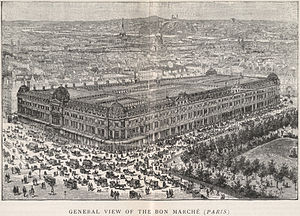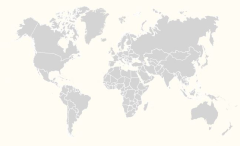Aristide Boucicaut was well-known as the creator of 'Le Bon Marche' and as an entrepreneur. He began his career with his father's business and sold ribbons, fabrics, hats and items for woman wardrobe. At the age of 18, Boucicaut left his family shop and started street vendor selling of fabrics. After six years, he went to Paris and started working in novelty store that sold women's clothing, fabrics, hats and other items.
Background
Aristide Boucicaut was born in Belleme. His father was a hat maker who ran his own business. In 1828, he left Belleme and in the following year, he became salesperson of shawls at Petit St. Thomas, rue du Bac in Paris. He then promoted to department manager because of his excellence.
He got affection for Marguerite Guerin, who worked in the nearby creamery. His mother refused to accept the girl, but Boucicaut began to live with her. In 1839, Marguerite gave birth to a child and later, in 1848, both got married.
Education
Aristide Boucicaut belonged to a hat maker family. He soon joined his father's work and left home at the age of 18 to work as street vendor seller of fabrics, hats, and much more items.
Career
Petit St. Thomas got closed in 1848, which turned Boucicaut to work in another store. But the fact is that he then joined Paul Videau, who owned a variety store and began implementing his innovative ideas. The novel ideas had worked great in marketing which proved to buy in bulk and sell them at a low price with a marginal profit.
This new concept of selling attracted the customers, and both started offering seasonal sales along with browsing and touching of clothes. However, Videau was not happy the way Boucicaut led, he later sold the shop 'Au Bon Marche Videau' to him in 1851.
With his modern style of selling and innovative ideas, he was able to increase the revenue of the shop from just 500,000 francs to 5 million francs (approx.). Boucicaut showed his real characteristics through his style of selling that includes reading rooms for males when their wives shopped, first ever mail order catalog, entertainment for children with prizes and much more.
He also introduced social innovations for all his employees. He offered the upper floor of the store to unmarried women employees, career improvement in the store, medical facility who got sick, pensions for those who worked for about twenty years.
Boucicaut's dreamed to built a grand departmental store for the people. For this, he met with a French entrepreneur, Henry Francois Maillard. Francois told him about Alexander Turney Stewart, who had constructed the first multi-story building to sell merchandise, the Marble Palace in New York.
With the desire to make an outstanding place for the people, Boucicaut hired the architect L.A. Boileau along with an engineering firm of Gustave Eiffel in 1869. The store was finally completed after ten years of the death of Aristide Boucicaut. Unfortunately, his son died at an early age and the death of Boucicaut made his wife, the President of the store that she managed until she died.
Religion
It is believed that Boucicaut belonged to Christianity. After his death, he was buried in the family tomb in Montparnasse Cemetary.
Politics
Although Boucicaut was too busy in his work, he was also interested in politics. In August 1871, he was elected as a Mayor, but he refused the post the very next day of mandate and preferred to be in the office of councilor.
Views
Because of his hard work and firmed determination towards his work, the Paris metro has been dedicated a station by his name, 'Boucicaut Station'.
Personality
Despite being working for long hours in stores, he fell in love with a girl who worked in a nearby creamery. Before marriage, they stayed together and gave birth to a child in 1839.
Connections
Aristide Boucicaut married to Marguerite Guerin in 1848, and they together had a son. Marguerite was born in Verjux on 3 January 1816. Her mother was abandoned (after she was born) by her father. Anyhow her mother managed to work as a laundress to grow her in Paris. She later joined creamery and worked there. Marguerite also joined her mother and worked in the same creamery.





